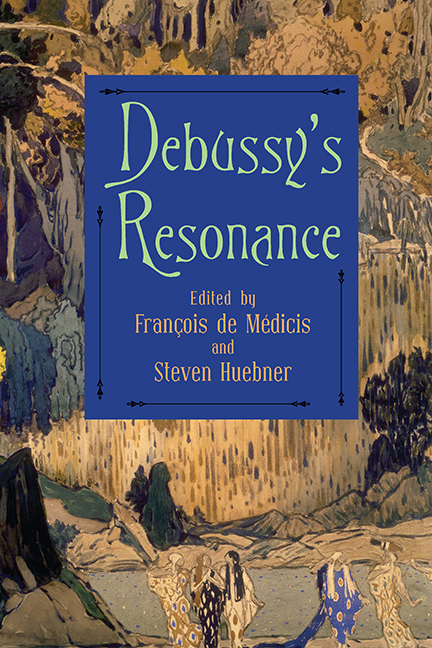Book contents
- Frontmatter
- Contents
- List of Illustrations
- Acknowledgments
- List of Abbreviations
- Introduction
- Part One Historiographical and Editorial Issues
- Part Two Style and Genre
- 5 The “Song Triptych”: Reflections on a Debussyan Genre
- 6 Composing after Wagner: The Music of Bruneau and Debussy, 1890–1902
- 7 Between Massenet and Wagner
- 8 Debussy's Concept of Orchestration
- 9 Oriental and Iberian Resonances in Early Debussy Songs
- Part Three History and Hermeneutics
- Part Four Theoretical Issues
- Part Five Performance and Reception
- List of Contributors
- Index
9 - Oriental and Iberian Resonances in Early Debussy Songs
from Part Two - Style and Genre
Published online by Cambridge University Press: 27 July 2019
- Frontmatter
- Contents
- List of Illustrations
- Acknowledgments
- List of Abbreviations
- Introduction
- Part One Historiographical and Editorial Issues
- Part Two Style and Genre
- 5 The “Song Triptych”: Reflections on a Debussyan Genre
- 6 Composing after Wagner: The Music of Bruneau and Debussy, 1890–1902
- 7 Between Massenet and Wagner
- 8 Debussy's Concept of Orchestration
- 9 Oriental and Iberian Resonances in Early Debussy Songs
- Part Three History and Hermeneutics
- Part Four Theoretical Issues
- Part Five Performance and Reception
- List of Contributors
- Index
Summary
Throughout his life Claude Debussy was attracted by exoticism, which essentially engages the notion of a fascinating, Other world that is tantalizingly different from one's native culture. Some of Debussy's best-loved compositions— works like “Pagodes,” from his Estampes for piano, and “Ibéria,” from the orchestral Images—conjure up faraway landscapes, from the Orient to Spain. As a cosmopolitan and relatively well-traveled Parisian, he was exposed to the traditions, sights, and sounds of other cultures; while his introduction to such influences may have come through a Western lens, later in life he actively sought and was inspired by indigenous ethnic sources. In addition, many of Debussy's closest friends opened his eyes vicariously to the art and aesthetic values of other civilizations. And, as Edward Said has reminded us, Paris was “the capital of the Orientalist world” by the turn of the century, when Debussy was in his prime.
The goal of this study is to investigate some of Debussy's musical responses to these various influences and—perhaps even more important—to illustrate their seminal role in the process of his own compositional growth. To that end, I will highlight two songs in particular—the Rondel chinois and Séguidille—exotic treasures that were never published during Debussy's lifetime. The Rondel chinois became publicly available only in 2013, in a private edition by Nigel Foster for the London Song Festival, and Séguidille was released in August 2014 by Durand, Debussy's own publisher, in a score edited by the present author.
Debussy composed both of these songs while still a student at the Conservatoire. Although he had not yet directly experienced Eastern musics, he could not have escaped the craze in Paris at that time for art of the Orient. Following the opening of trade channels between the East and West in the mid-nineteenth century, the European market was flooded with articles such as prints, ceramics, furniture, ivories, silks, and bronze works from China and Japan. Art dealers such as Siegfried Bing—a German who moved to France in 1854, where he promoted Japanese art and played a seminal role in the promulgation of the Art Nouveau style—began to import oriental objects in the 1870s. Others such as Enrico Cernuschi—an Italian patriot who fled after the 1848 Revolution and relocated to Paris, where he would become a wealthy banker—also collected oriental art on a massive scale.
- Type
- Chapter
- Information
- Debussy's Resonance , pp. 272 - 298Publisher: Boydell & BrewerPrint publication year: 2018



